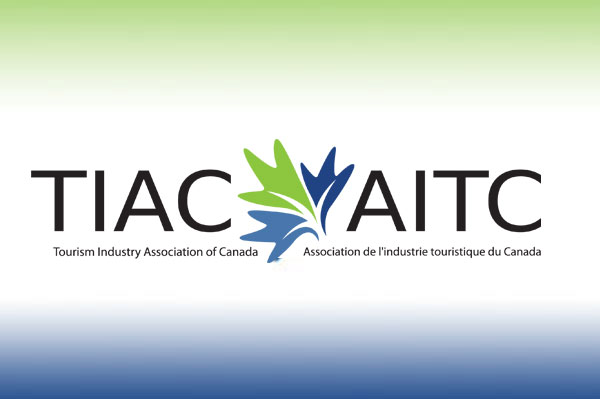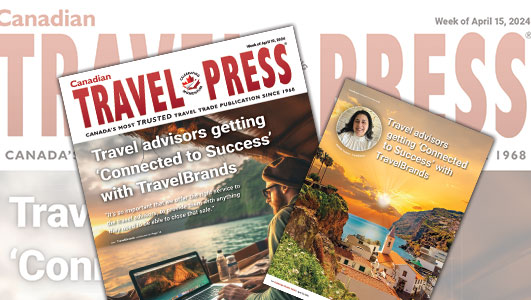Tourism Glowing From Coast To Coast

It may only be a seven-day celebration, but Tourism Week In Canada reminded Canadians from coast to coast that the tourism industry is a 24/7 economic generator and a vital part of this country’s cultural ecosystems, impacting every region and community.
In 2021, the week-long celebration brought with it a new sense of optimism as regions across the country announced their pandemic re-opening plans, providing operators with a target date to start preparing and retooling to welcome visitors. And while much remains to be done, there are positive signs that the freeze on travel is starting to thaw.
Launched by the Tourism Industry Association of Canada (TIAC) and its provincial and territorial tourism industry association partners the week was anchored by a call to action for Canadians to take the pledge to travel in Canada when restrictions are lifted and not just then, but even after borders open as operators across the country need support to weather the storm and recover as a vital contributor to the community.
Consider for a moment that before the pandemic struck, travel in Canada generated $105 billion in economic activity, accounting for 2.3% of the country’s GDP. In 2019, the travel and tourism industry was responsible for employing 1.8 million workers in that year. Prior to COVID-19, the tourism economy in Canada was the fifth largest, responsible for one in ten jobs.
Many tourism businesses have been severely impacted by the pandemic with a report by Tourism HR Canada reporting that this country’s tourism economy has lost over half a million jobs and unemployment in the industry has surpassed the national unemployment rate.
Every Community Impacted
TIAC president and CEO, Beth Potter points out that: “Every community in Canada has been impacted by the tourism industry’s crisis which is why, when
restrictions are lifted, we encourage Canadians to support our industry and spend their tourism dollars in Canada.”

Recent research from Destination Canada found that if Canadians shift two-thirds of their planned spend on international leisure travel towards domestic tourism, it will make up for the forecasted $19 billion shortfall currently facing the visitor economy – and help sustain 150,000 jobs.
Said Potter: “This is an invitation to come together as a country and support our local tourism destinations, businesses and employees.”
And she noted that there has already been a positive response to the pledge proposal. “We have seen great engagement from across the country and we are so pleased with the outpouring of support for the industry this Tourism Week.”
More Work To Do
“But, while we acknowledge the industry’s resilience, we know there is more work to be done and we are actively advocating behind the scenes to ensure the industry continues to get the support it needs, for as long as needed,” said Potter.
She said that: “TIAC has been advocating for sector-specific support for the industry since the onset of the pandemic. Many of our operators face different scenarios and needs which means they fall through the cracks for some of the government support programs. It’s a problem we address with federal officials on a regular basis and present recommended solutions.”
For example, one sector of our industry that accounts for a large portion of revenues – is the cruise sector, and as most have seen in the news it has been heavily impacted by this pandemic; with suspended operations until 2022.
Cruise Concerns
Further, recent changes in the U.S. regarding cruise laws threaten to marginalize Canadian destinations that rely on the seasonal business of cruise ship arrivals and home port dockings. That has far-reaching implications for all other connected firms, ranging from tour operators to hospitality services.
Said Potter: “The cruise industry has been particularly hard hit with mandated closures through to next spring. TIAC has just launched a National Cruise Committee with representation from across the country to ensure that needs are addressed. Cruise is an integral part of tourism’s suite of sectors.”
Any revival for the industry must include a plan to reopen international borders, both with the U.S. and offshore. TIAC is calling for a plan to open international borders as soon as can safely be allowed.

As Potter made it clear that: “Border openings are one of our main advocacy efforts right now. Looking ahead, our number one priority is getting back to business at full capacity. We are asking government to put a line in the sand and name a target date for border re-opening, including a definitive plan for proof of vaccination for international travel, testing requirements and elimination of quarantines.”
TIAC’s boss also pointed out that tourism businesses cannot be restarted at a moment’s notice, and that they need time to re-contract, re-market, re-tool and re-hire. Hence the call for a defined timeline of a government plan to reopen the borders.
Said Potter: “It’s extremely important that we take a leadership position and plan for the efficient reopening of the border, based on health and science metrics, and keep Canada on the global playing field.”


